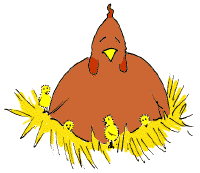Method 1: by Red
you will need:
a washing up bowl
washing soda crystals
washing up liquid
hot water
The method I use is to only work on a small part of fleece at a time, the advantage being that it’s not so daunting and you can keep the rest of the fleece ‘in the grease’, in your shed!
When you first get your fleece, it needs to be ‘skirted’ – this will often be done by the farmer, but if you are the farmer .. then it’s up to you. Lay the fleece out and remove a few inches all the way around, and probably more around the tail end, depending on how mucky the fleece is. Remove any other mucky or stained parts, then wrap up in an old sheet or duvet cover and store somewhere cool and dry, until you are ready to scour.
Start by gently tearing off a piece of fleece about the same size as your washing up bowl. Sit down and go over it, picking out debris and particularly pooey bits of wool, you can put these disgarded pieces on the compost heap.
Now fill up the washing up bowl with water just as hot as you can stand to put your hands into, then shake in about a few tablespoons of the washing soda and a squirt of washing up liquid. Gently immerse the fleece into the water. At this point the water will go pretty murky – thats the lanolin rushing out. NB, if you are allergic to lanolin, you should be wearing gloves, but to be honest, if you have a problem with lanolin, working will wool might not be for you.
To wash wool you need soap and hot water, to felt wool you need soap hot water and agitation.. so the key is not to move it around much at
all. Gently push the fleece with your fingertips, and squeeze it – but very very carefully. You can very gently work on a muddy lock with your fingers, but gently gently. Did I mention being gentle?
Next lift the fleece out of the water (don’t pour the water off the fleece, any grit and dirt you washed off will just collect on the fleece again), rinse your bowl and refill with just hot water, the same temperature as the first time.
- washed fleece
Gently immerse the fleece again, then lift out again. If it’s a particularly dirty fleece you might have to repeat the washing and rinsing steps again, but generally I don’t have to.
now you need to dry the fleece – and best to get as much water out now as possible – I tie it up in an old pillowcase, quite closely, and use the spin only cycle of my washing machine. then the fleece is laid on a rack – ours are an old caravan drying rack, and an arrangement made out of an old picnic table and some fridge shelves. We dry ours near a radiator in winter, or outside in summer.
Once it is completely dry, bag it up in ziplock bags or sealable boxes, to keep it away from moths. now it is ready for carding and spinning!
Please note this article is for guidance only and the author nor selfsufficientish can be held responsible for anything silly that you do as a result of this article.


Thanks so much for directing me to this – I’ll have a go.